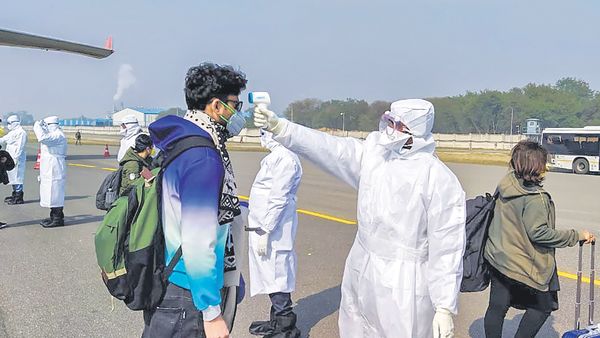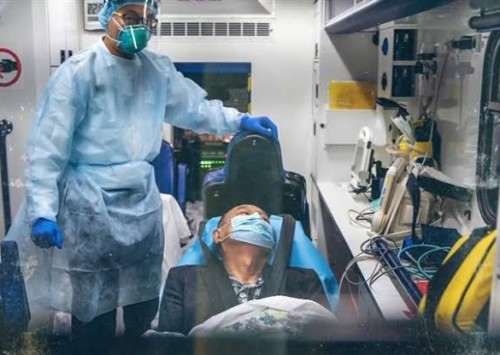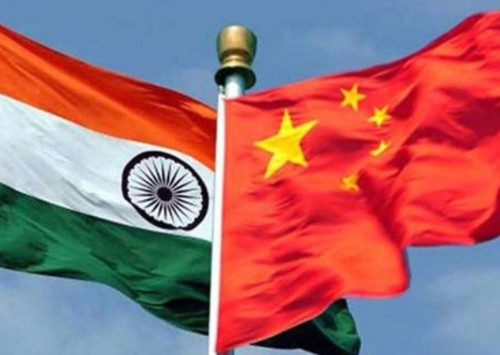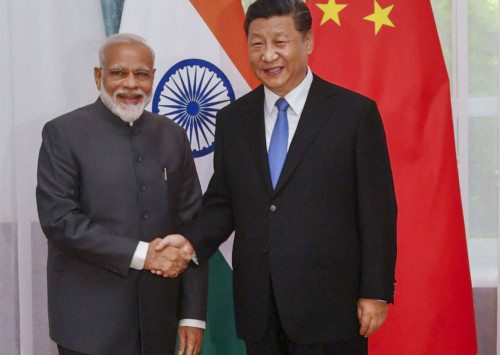Coronavirus outbreak
India’s neighbourhood first policy dates back almost 100 years ago when a doctor led a medical team to help Chinese Army battle the Japanese invasion. In face of coronavirus outbreak, it may be time for India to replicate the gesture.
Now that the evacuation of Indian students and citizens from Wuhan city and surrounding area in China has been nearly achieved and that Indian ministry of external affairs has also helped neighbouring countries like Maldives to get their citizens back in face of coronavirus, let us go back 82 years, to 1938.
But before that journey into past, it would be appropriate to look at the present in more detail. On January 30, the World Health Organisation (WHO) declared the coronavirus outbreak, that had begun in Wuhan a month earlier, as a global emergency. The WHO also said that the virus was infecting more people at a faster pace than any other virus outbreaks in the recent years.
The outbreak was the least expected event at the beginning of new year and the new decade. Many experts had predicted an economically gloomy beginning to the 2020, but accompanied with exciting technological disruptions including likes of the Artificial Intelligence, space exploration, driverless cars and even the emergence of yet unknown technologies. Some others predicted that though global warming was rapidly engulfing the world, it would be accompanied by development of revolutionary technologies like electric vehicles, carbon sinks and bending solar energy from space planet to decarbonise the world.
However, none of the crystal grazers could predict the outbreak of the coronavirus, baptised as 2019-nCov by WHO. No one knows exactly where it came from and what are its precise symptoms. Uncertainty about the pandemic is so certain that except for the fact that the new pathogen transmits between the humans nothing is known about it. It is like the flu (influenza) that spreads faster than SARS or MERS.
Science fiction writers say that the last remaining creatures on our planet after the sixth extinction would be viruses and the insects who would feed on each other in a sustainable manner forever! As we know, many other imaginations of sci-fi have indeed come true as humans are travelling to the moon and very soon flying cars as well!
Faced with such a dire prediction, it would be but human to escape from the battle-field, block the enemy and keep those infected in an isolation and far away. That is indeed what many countries like India, the United States, France and the United Kingdom have done. They have pulled out their citizens and shut the door on the Chinese in an attempt to protect themselves from the epidemic.
For most of the people, this would be the right step and perhaps the only logical and right response to the outbreak. However, this is where the story of 1938 becomes relevant and important, at least for India and its leaders. It was then that India, even before achieving independence, had put into practice its Neighbourhood First policy.
At that time, the Chinese communists had been fighting to drive the Japanese invaders and occupiers off their motherland. In this troubled period, the then Chinese leadership sent an urgent message to Pandit Jawaharlal Nehru and requested for medical aid to help the injured soldiers. The Indian leadership immediately responded to the plea for help and Netaji Subhash Chandra Bose, the then president of the Congress, held a press conference on June 30, 1938 where he made a public appeal to the people.
The appeal immediately impacted Dr Dwarkanath Kotnis, a fresh graduate from Seth G S Medical College, University of Bombay, who was getting ready for post-graduation. Just about 28 years old, he was swayed by the appeal of Netaji Bose and went to his family to take their permission to be part of the team of doctors that was to go to China to serve the injured Chinese soldiers. Despite being a neighbour, the awareness about China in India was very minimal, limited to Chinese silk and the travelogues of Fa Hsein, Hsuan-Tsang and Sung Yun who had visited India between 400-700 AD. Despite this Dwarkanath’s father, Shantaram, encouraged his son to venture out, though his mother was depressed because Dwarkanath was going far beyond Himalaya and worse, to a battle field.
Netaji and Nehru had perhaps given birth to the Neighbourhood First doctrine that India would continue to follow almost 100 years later. Thus, Dr Kotnis and his fellow doctors became the first exponents of this visionary policy at an individual level and embarked on the journey to China. Interestingly, there were no Indian citizens to be evacuated from the battlefield in China!
Now comes the striking coincidence. That team of doctors from India, that itself was struggling for freedom, arrived in China which was also battling for independence. As coincidence would have it, the band of brave Indian doctors arrived in China at a port near Wuhan and went to the battle field. They were warmly welcomed by the Chinese general Mao Zedong, who later became China’s supreme leader, chairman Mao. At that key moment in Chinese history, India had become the first and only country to give a helping hand to China to help it overcome the challenge of war and disease.
The 28-year-old Dr Kotnis joined Mao’s Eighth Route Army and treated wounded soldiers working in mobile clinics travelling to north China from Hebei province. Despite acute shortage of medicines, Dr Kotnis and his team performed operations continuously for 72 hours. Kotnis alone treated more than 800 wounded soldiers in the battle. He was eventually appointed as the director of the Dr Bethune International Peace Hospital named after the famous Canadian surgeon Norman Bethune who was also part of a medical team from abroad.
Once their mission was accomplished, the other four doctors of the Indian medical team returned home safely. However, Dr Kotnis stayed on and got married to a Chinese nurse, Guo Qinglan. They had first met at the inauguration of Dr Norman Bethune’s tomb. They named their son Yinhua (India-China).
Though the Japanese invaders and the disease was defeated, the stress and hard work put in by Dr Kotnis took its toll on his health and he died in 1942, leaving behind his widow and a baby son. But even in his death he left behind a key message for today’s leaders. ‘‘The army has lost a helping hand, the nation has lost a friend. Let us always bear in mind his internationalist spirit,’’ was how Dr Kotnis was mourned by chairman Mao.
It is this international spirit that is missing today as the world struggles to deal with the coronavirus. Barely four years ago, in 2016, in Xi’an, a town less than 800 km from Wuhan, Prime Minister Narendra Modi had said of the complexities of Indo-Chinese ties, “We have a historic responsibility to turn our relationship into a source of strength for each other and a source of good for the world.” Two years later, in 2018, an informal summit between Modi and Jinping took place in Wuhan itself, which is the epicentre of coronavirus today. In a communique, after the Wuhan summit, the two leaders noted that, ‘‘India and China, given their vast developmental experiences and national capacities, should join hands to take lead in offering innovative and sustainable solutions to challenges faced by humankind in the 21st century.”
It is this Wuhan spirit of 2018 or the internationalist spirit of 1938 that is missing from the Indian response to the crisis that China faces today. It would have been apt and indeed desirable, had Modi offered immediate medical assistance as well as an offer to conduct joint research with Chinese scientists on coronavirus and development of a joint strategy to deal with the latest pandemic. The Air India planes that evacuated Indians from Wuhan should also have carried medical supplies and other equipment and personnel that could help China in overcoming this crisis. That would have been the best homage to not only Dr Kotnis and the Indian spirit of Vasudhaiva Kutumbakam as well as the Indian policy of Neighbourhood First. But it looks like the Wuhan virus outbreak ended up consuming the Wuhan spirit of 2018 as well.













